Recent Articles
Popular Makes
Body Types
2019 Audi TT vs. 2019 Nissan 370Z: Which Is Best?
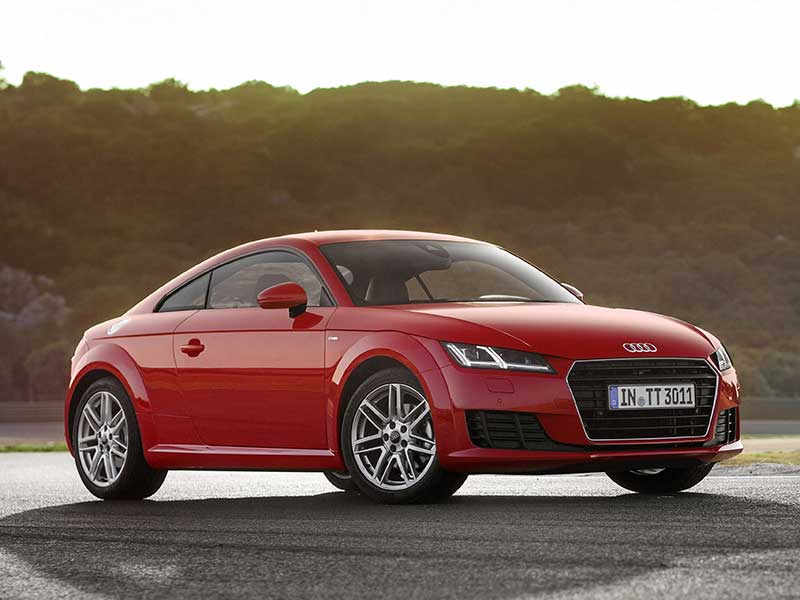
2017 Audi TT ・ Photo by Audi
As long as there are cars, enthusiasts will demand sport coupes. Small, nimble, and well-balanced, sport coupes occupy a niche between ordinary coupes and true sports cars. Two compelling sports coupes on the market today are the Audi TT and the Nissan 370Z.
The TT debuted as a 2000 model with a shocking design and innovative technology. Now in its third generation of production (since the 2015 model year), the TT is less shocking but still crisply designed and high-tech. The 370Z draws on brand heritage as the spiritual descendant of the Datsun/Nissan Z cars, which ran in the U.S. from the 1970 240Z through the 1996 300ZX. Production picked back up with the 2003 350Z. The current generation Z car, the 370Z, debuted as a 2009 model. Which is the best today?
Design
Audi TT’s Bauhaus-inspired design has a decidedly retrofuturist look, with modern technology packed into a striking profile that could have been traced in the 1920s. The interior of the coupe is a 2+2 setup, with cozy seating for two rear passengers. The coupe has a 12.0-cubic-foot luggage compartment, while the roadster has seating for two, no rear seat, and a 7.5-cubic-foot trunk.
The Nissan 370Z does its best to emulate the proportions of the classic 240Z with a long hood and short cabin. Both the coupe and roadster are two-seaters, with no accommodations for additional passengers. Coupes have a 6.9-cubic-foot trunk, while roadsters must make do with a tidy 4.2 cubic feet.
Audi TT
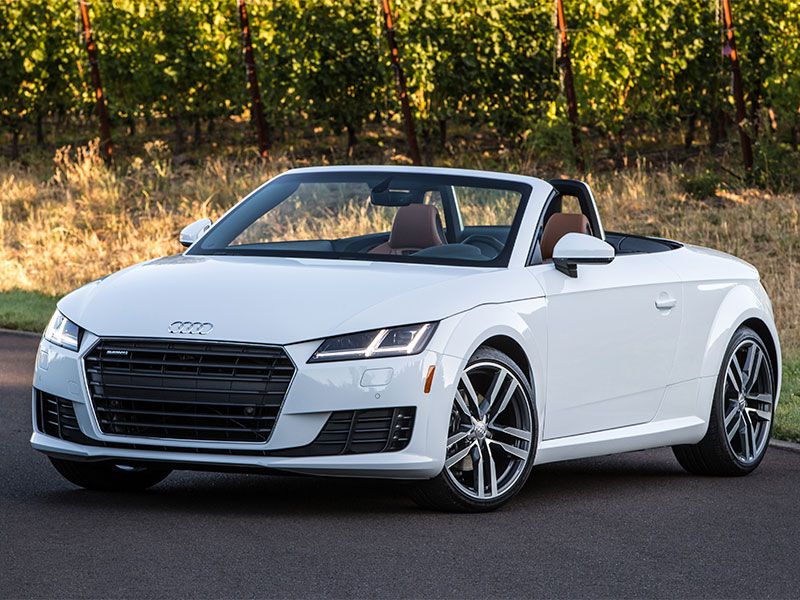
Photo by Audi
Engines
The Nissan 370Z has a naturally aspirated (non-turbo) 3.7-liter V6 gasoline engine with Variable Valve Event and Lift Control. The engine is tuned to produce 332 horsepower and 270 lb-ft of torque in 370Z, Sport, Touring, and Sport Touring models, and 350 hp and 276 lb-ft of torque in Nismo models.
Audi TT, TTS, and TT RS models all use transversely mounted turbocharged engines with inline cylinders and gasoline direct injection. The base TT gets a 2.0-liter four-cylinder that puts out 220 hp and 258 lb-ft of torque, and the TTS gets a 2.0-liter four-cylinder that is tuned to produce 292 hp and 280 lb-ft of torque. The TT RS is fitted with a five-cylinder engine that pumps out 400 hp and 354 lb-ft of torque.
: Audi TT
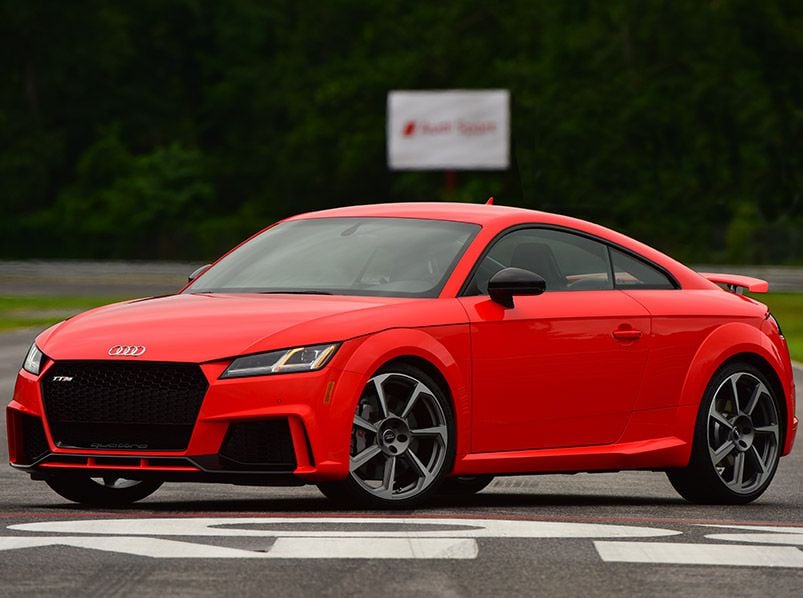
Photo by Audi
Transmission/Drivetrain
All Audi TT variants come with Audi’s signature Quattro all-wheel drive system as standard equipment. The TT and TTS models mate their four-cylinder turbo engines with a six-speed dual-clutch automatic transmission (DCT) with paddle shifters. The TT RS gets a seven-speed DCT with paddle shifters.
Each 370Z uses its engine to drive the rear wheels only — all-wheel drive is not an option. Enthusiast-friendly six-speed manual transmissions are standard in all but the Roadster models, which come with a standard conventional seven-speed automatic transmission with paddle shifters. The automatic is also available in all models except the 370Z Sport, which offers a manual only. SyncrhoRev Match is standard with manual transmission models, a feature that can eliminate the need for fancy heel/toe maneuvers in the footbox.
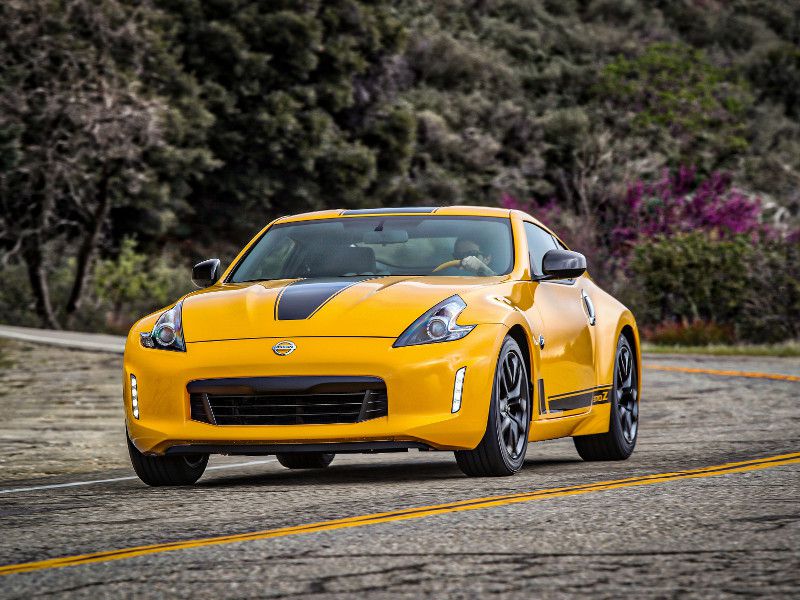
Photo by Nissan
Suspension/Steering/Brakes
All TT models come with four-wheel independent suspension, with MacPherson struts up front and a four-link in the rear. The TTS and TT RS come standard with adjustable magnetic ride control, and the TT RS is offered with a fixed sport suspension. TT and TTS models use ventilated front discs and solid rear discs, while the TT RS uses bigger ventilated discs front and rear. Ceramic front discs are available for the TT RS. Steering on all models is electromechanical speed-sensitive with progressive effort.
The 370Z also gets a four-wheel independent suspension across the line, with a double-wishbone front and multi-link rear, high-response shock absorbers at each corner, and a hollow stabilizer bar in the front. Ventilated discs are standard on all four wheels. Vehicle-speed-sensitive power rack-and-pinion steering helps point the Z in the right direction, and a solenoid is employed to emulate a steering damper to limit kickback.
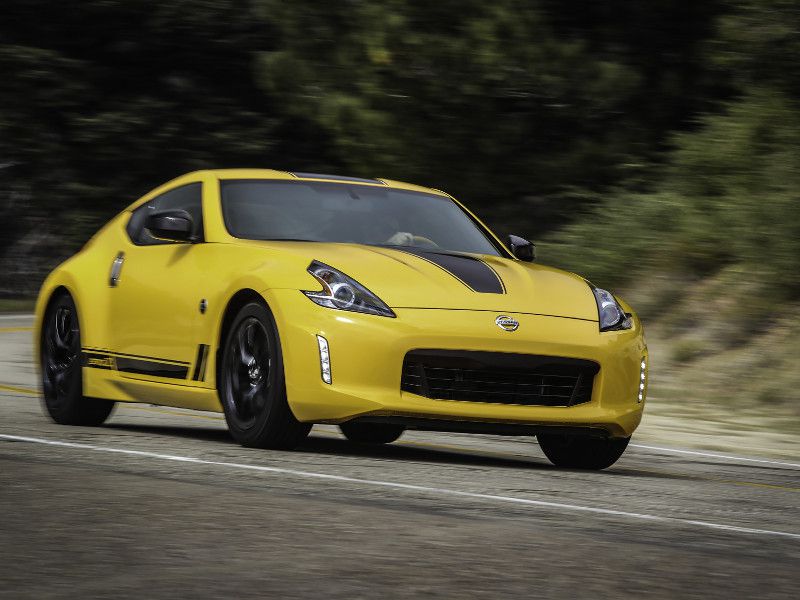
Photo by Nissan
Infotainment/Technology
The TT comes with the 12.3-inch Audi "virtual cockpit" instrument panel display as standard equipment, along with MMI Touch interface and Bluetooth hands-free and audio streaming. Available Audi Connect infotainment adds 4G LTE Wi-Fi hotspot connectivity and more. Apple CarPlay and Android Auto are also available. A 680-watt Bang & Olufson sound system with 12 speakers is an available upgrade on all models. LED exterior lighting is standard, and OLED taillights are available on the TT RS.
The 370Z takes the retro route, with three-pod analog gauges facing the driver from above the steering wheel. The base model comes with a six-speaker AM/FM/CD audio system, while Sport and above come with a 240-watt Bose AM/FM/CD system with six speakers and two subwoofers and Active Noise Cancellation/Active Sound Enhancement. Hard-drive navigation with a 7.0-inch VGA touch-sensitive display comes with Sport Touring and above. Bluetooth is standard in all models.
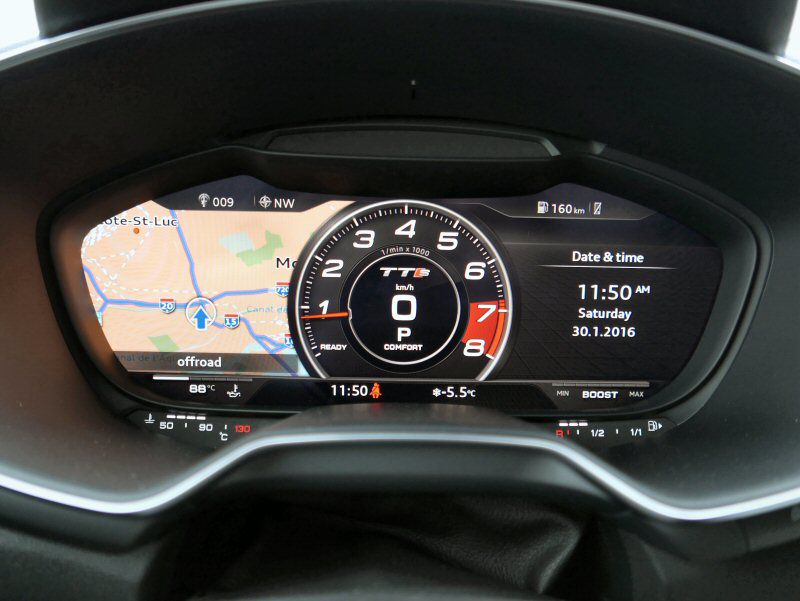
Photo by Audi
Safety
Safety is an important concern in all motor vehicles, but especially in a sport coupe. Most of the other vehicles on the road are bigger and heavier than these coupes, so every bit of safety equipment helps. Probably most important is maneuverability — the ability to avoid collisions and obstacles in the first place. The TT’s Quattro all-wheel drive has an advantage over the 370Z’s rear-wheel drive.
Both vehicles come with electronic stability control, traction control, and tire pressure monitoring systems, along with antilock brakes and electronic brake force distribution. The TT has driver and front-passenger dual-stage airbags, front thorax side airbags, knee airbags, and head curtain airbags (except for the roadster). The 370Z has driver and front-passenger dual-stage airbags, seat-mounted side airbags and roof-mounted curtain side-impact supplemental airbags (except for the roadster). The TT has a standard rear-view camera, and standard front and rear parking sensors.
: Audi TT
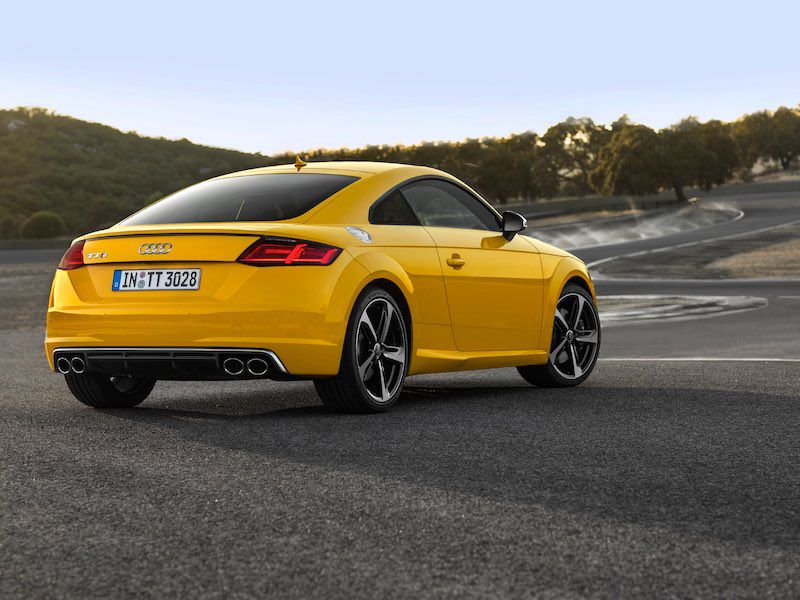
Photo by Audi
Driving Experience
Both of these sport coupes deliver a lot of driving fun. The 370Z, with its naturally aspirated V6 and rear-wheel drive, is the muscle car of the two. The engine’s weight is concentrated behind the front axle line, which gives 370Z a balanced feel. The manual transmission is a delight, and anyone who enjoys drifting will be drawn to the Z.
The TT and TTS are finesse vehicles, with enough horsepower and torque to be fun, and knife-edged handling to carve corners. The real star is the TT RS, which uses its snorting five-cylinder turbo to power down the straightaways and rush through the curves. TT RS is a substantial step up over the other TT models and over the 370Z — and is priced accordingly.
Audi TT
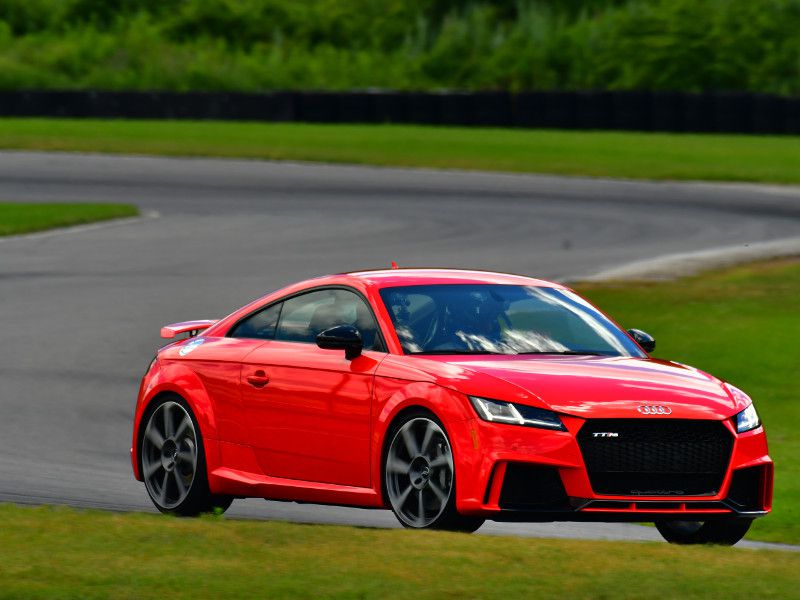
Photo by Audi
Roadsters
The 370Z Roadster features a fully automatic retractable convertible top with automatic latching, requiring no driver intervention. The top can fully retract in 20 seconds and redeploy in the same amount of time. The insulated cloth top has a glass rear window with an integrated electric defrost function. A glass wind deflector behind the headrests reduces turbulence in the cabin.
The TT Roadster’s roof is also an insulated cloth unit that Audi calls an “acoustic roof,” designed to keep the interior quiet when it is in place. The TT’s roof uses an electrohydraulic drive that can uncover or cover the cabin in 10 seconds, and it can be operated while the vehicle is in motion up to 31 mph. A glass rear window is standard, with electric defrost.
Audi TT
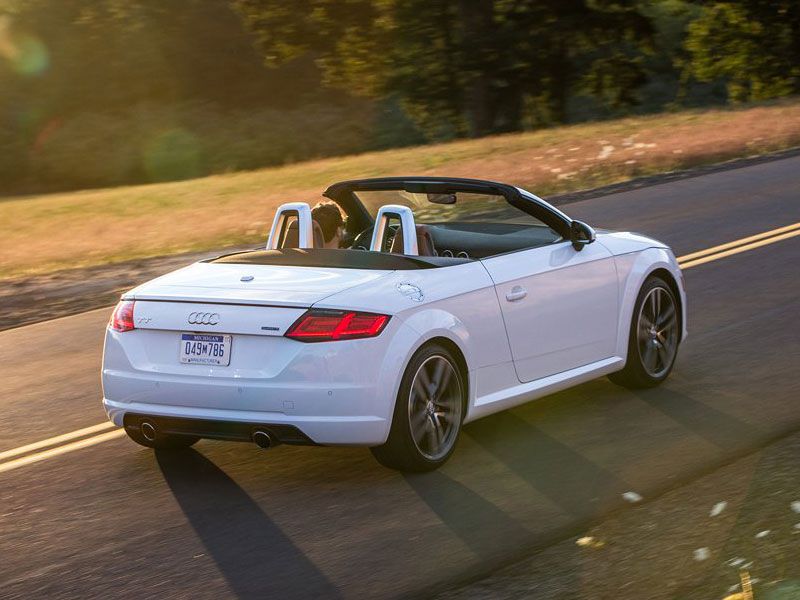
Photo by Audi
Pricing
The 2018 Audi TT coupe starts at $43,050, while the TT roadster starts at $47,050. The TTS starts at $52,950, and the souped-up TT RS starts at $64,900. (2019 pricing is not yet available but should be similar.) Available options include the Technology Package ($3,500), S Line Competition Package ($2,100), and Dynamic Plus Package ($6,000 for the TT RS only).
The 2019 Nissan 370Z coupe starts at $29,990 with a six-speed manual transmission, and $31,390 with a seven-speed automatic. The 370Z Sport comes only with the manual for $33,720. The Sport Touring manual starts at $38,090, with an automatic at $39,390. The Nismo starts at $45,690 with the manual and $47,090 with the automatic. The roadster starts at $41,820, the Touring model increases to $46,570, and the Sport Touring starts at $49,400. Roadster models all come with automatic transmissions as standard equipment, with no manual offered.
Nissan 370Z
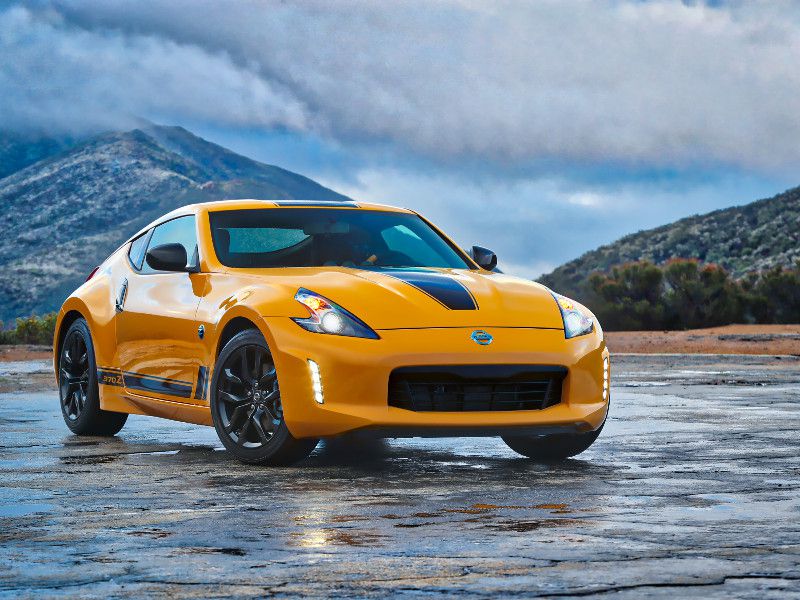
Photo by Nissan
Recommendations
Both the 2019 Audi TT and the 2019 Nissan 370Z have a big challenge at the entry level, and that’s the Mazda MX-5 Miata and MX-5 Miata RF, which start at about $25,000 and peak at just above $32,000. Don’t overlook the Miata in your decision-making process.
If you stay with this higher price bracket, choosing between the TT and 370Z really depends on how you intend to use the vehicle. The 370Z would be a good choice for enthusiasts who want a car that can be easily set up as a track-day car. Nissan’s performance arm, Nismo, has a ton of upgrades available, and the aftermarket is rich with affordable possibilities. The TT is a much more versatile vehicle for everyday use, especially in coupe form with its 2+2 setup and relatively big cargo hold. The TT RS is the best of the bunch, a genuine sports car if truth be told.
Audi TT
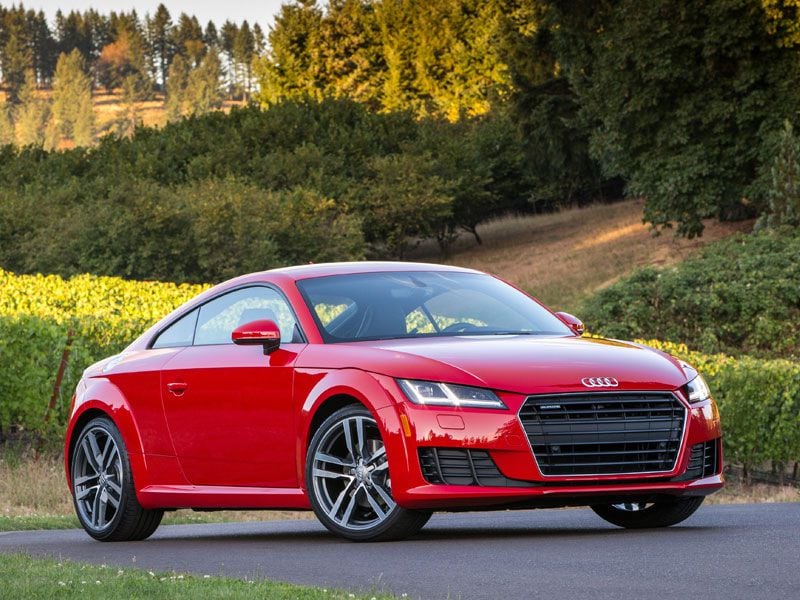
Photo by Audi